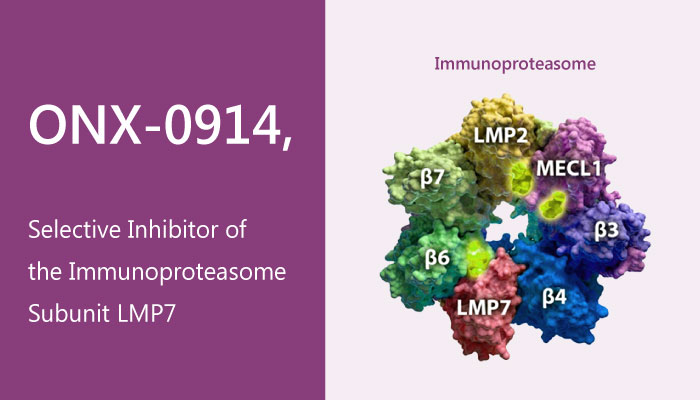Immunoproteasome plays a critical role in the immune system because it degrades intracellular proteins, for example, those of viral origin, into small proteins. Immunoproteasome is abundantly expressed in immune cells. In addition, the immunoproteasome influences inflammatory disease pathogenesis through its ability to regulate T cell polarization. The immunoproteasome is also expressed in nonimmune cell types during inflammation or neoplastic transformation, supporting a role in the pathogenesis of autoimmune diseases and neoplasms. Since the primary role of the immunoproteasome is to process antigens for presentation on major histocompatibility complex (MHC) class I molecules to CD8+ T lymphocytes, the immunoproteasome degrades various proteins, including viral proteins. Therefore, the immunoproteasome plays an important role during viral infection. Interferon-γ (IFN-γ) and tumor necrosis factor-α (TNF-α) induce the expression of the immunoproteasome under inflammatory conditions, such as infections, and autoimmune diseases when inflammatory cytokines are present.
In this study, Muchamuel T, et al described the characterization of ONX-0914 (PR-957). ONX-0914 is the first proteasome inhibitor. Especially, NX-0914 represents a powerful tool for understanding the role of LMP7 in immune responses. NX-0914 is a selective inhibitor of low-molecular mass polypeptide-7 (LMP7, encoded by Psmb8). LMP7 is the chymotrypsin-like subunit of the immunoproteasome. ONX-0914 selectively inhibits LMP7, blocking production of IL-23 by activating monocytes and interferon-γ and IL-2 by T cells.PR-957 blocks presentation of LMP7-specific, MHC-I-restricted antigens in vitro and in vivo. In mouse models of rheumatoid arthritis, ONX-0914 treatment reverses signs of disease and results in reductions in cellular infiltration, cytokine production and autoantibody levels.
